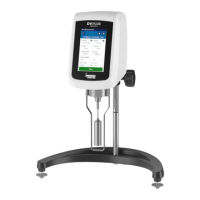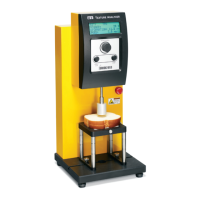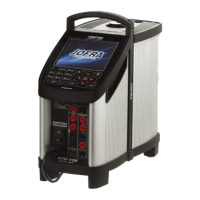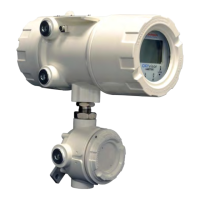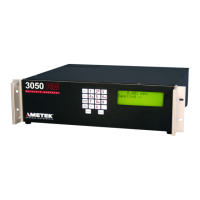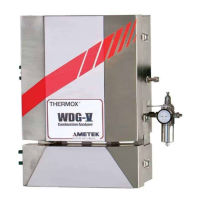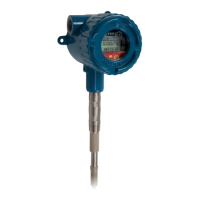M19-2101 REVISION 2.0 DVNEXT RHEOMETER - OPERATIONAL MANUAL
low shear rates.
An Example of the Casson Model at Work
Before releasing a new over the counter gel, a
pharmaceutical company needs to learn how it will
behave which it is being used by the end consumer. They
perform a full viscosity profile and apply the Casson
model. From the results, shown in Figure 6-4, they learn
that their ointment has a higher yield stress τ
0
and lower
plastic viscosity η than they originally intended. As a result
it is dicult or dispense from its container (due to the high
yield stress) and it does not hold it shape very well (due
to the low plastic viscosity), making it dicult to apply a
small amount to the aected area of the skin. Based on
this data, formulators are able to modify the ingredients
accordingly. Once a formulation is established, multi-point
tests and the Casson Model are performed as a QC tool
to check batches before and after processing.
Pharmaceutical Gel
Plastic viscosity (η) = 331 cP
Yield Stress (τ
0
) = 325 dynes/cm
2
6.5 Other rheological models
THE NCA/CMA CASSON MODEL
The NCA/CMA Casson model is designed by the National Confectioners Association and the Chocolate
Manufacturers Association as the standard rheological model for the industry. This model determines yield and
flow properties under specified conditions and closely approximates the plastic behavior of chocolate before final
processing.
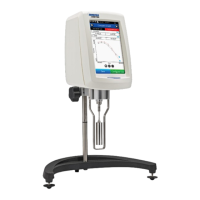
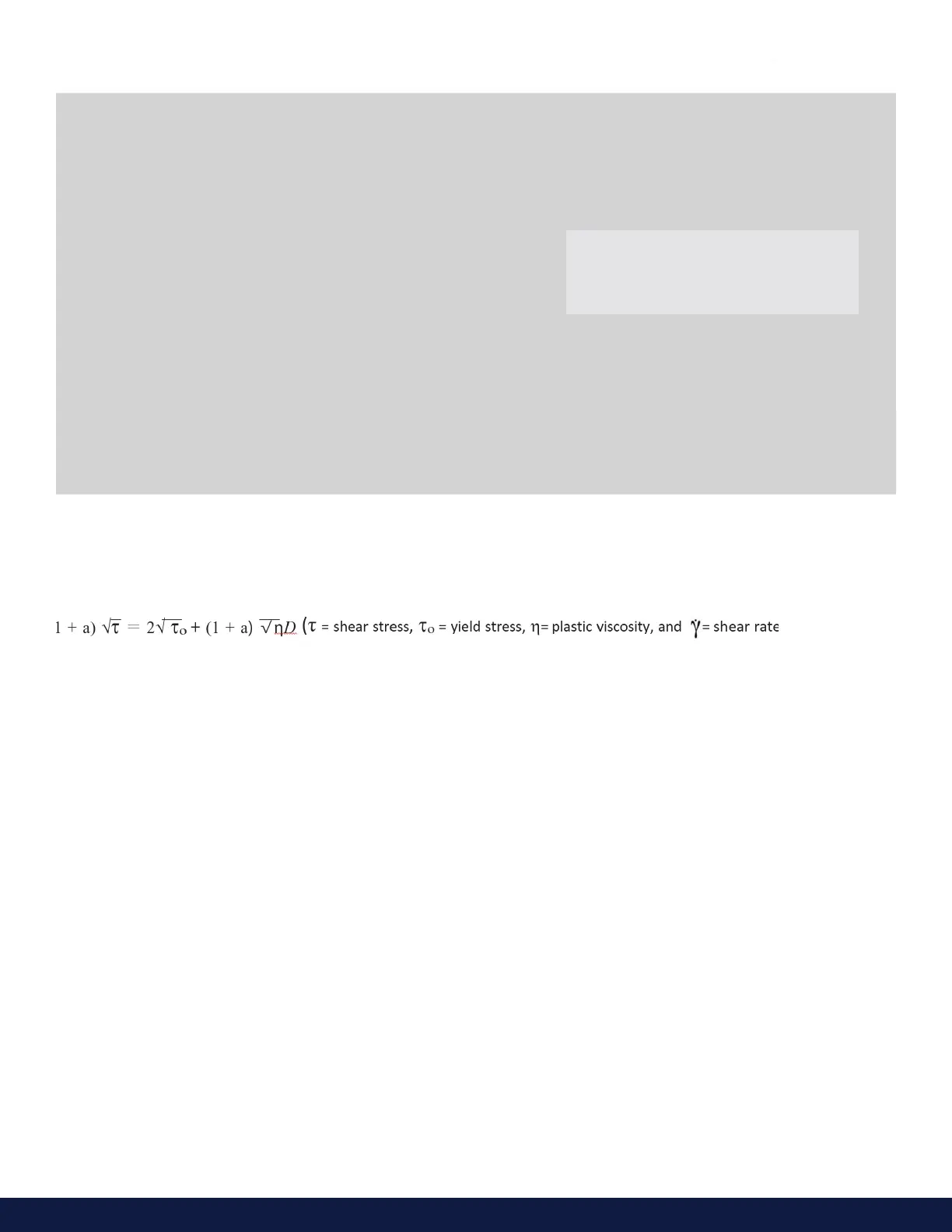